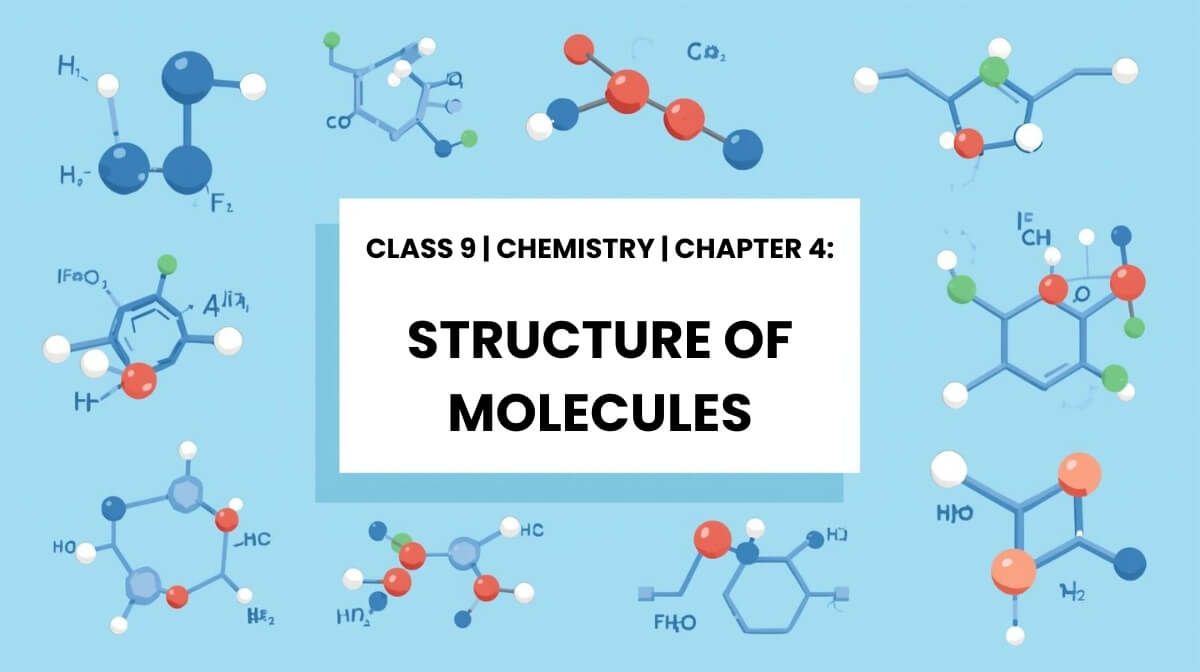Chapter 4: Structure of Molecules focuses on how atoms combine to form molecules, the types of chemical bonds, molecular formulas, and the concept of valency. Students will also learn about ionic and covalent bonding, structural formulas, and how these bonds affect the properties of compounds. This chapter helps in understanding the molecular composition of matter and the forces that hold it together.
1. What is the smallest particle of a compound that retains its chemical properties?
- A. Atom
- B. Molecule ✅
- C. Ion
- D. Proton
2. What type of bond is formed when electrons are transferred from one atom to another?
- A. Covalent bond
- B. Ionic bond ✅
- C. Metallic bond
- D. Hydrogen bond
3. Which of the following represents a covalent compound?
- A. NaCl
- B. KBr
- C. H2O ✅
- D. CaCl2
4. What does a structural formula show?
- A. Mass of each atom
- B. State of the substance
- C. Arrangement of atoms and bonds ✅
- D. Total energy
5. What is the valency of oxygen in water?
- A. 1
- B. 2 ✅
- C. 3
- D. 4
6. Which of the following has a double covalent bond?
- A. H2
- B. O2
- C. CO2 ✅
- D. CH4
7. What term describes molecules with the same molecular formula but different arrangements of atoms?
- A. Isotopes
- B. Isomers ✅
- C. Isobars
- D. Allotropes
8. Which property is typical of ionic compounds?
- A. Low melting point
- B. High melting point ✅
- C. Poor conductor when molten
- D. Soft and flexible
9. Which of the following bonds is the weakest?
- A. Ionic bond
- B. Covalent bond
- C. Hydrogen bond ✅
- D. Metallic bond
10. Which formula shows the actual number of atoms of each element in a molecule?
- A. Empirical formula
- B. Molecular formula ✅
- C. Structural formula
- D. Condensed formula

